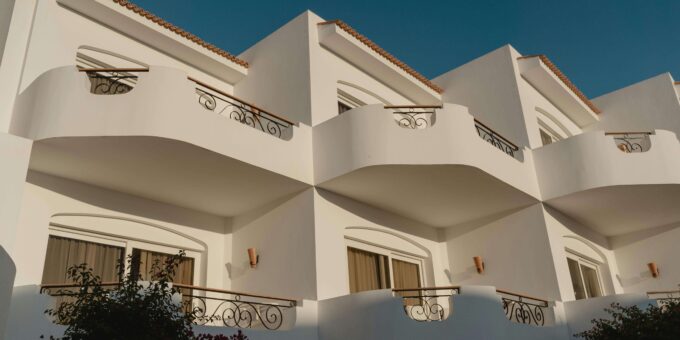
Luxury hotels sit at the top tier of hospitality, offering unforgettable guest experiences through architectural brilliance, curated services, and world-class amenities. Yet, what guests see—the marble lobbies, Michelin-starred dining, and rooftop infinity pools—is only the tip of the iceberg. Beneath it lies a carefully engineered financial structure.
Unlike economy or midscale hotels, luxury properties demand high upfront investment, significant operating costs, and frequent reinvestment in renovations to remain relevant. With global competition and evolving guest expectations, hotel operators cannot rely on revenue alone to meet these demands. That’s where structured debt and credit lines come into play.
By designing a financing framework that blends long-term debt with short-term credit facilities, hoteliers can sustain daily operations, fund expansions, and weather downturns. The goal is not simply to borrow but to borrow wisely—aligning repayment schedules with revenue cycles and ensuring liquidity without over-leveraging.
Understanding Debt Structures in Hospitality
Debt financing is central to the hospitality industry. From acquiring prime land in a city center to financing a beachfront resort expansion, different debt structures provide the backbone for luxury hotel growth.
Types of Debt in Luxury Hotel Financing
-
Mortgage Loans: The most common form of long-term debt, used for acquisitions or construction. These loans often span 10–25 years and are secured by the property itself.
-
Construction Loans: Short-term financing designed to cover building costs. These typically convert into permanent mortgages once the property is completed.
-
Bridge Loans: Temporary financing that fills gaps during renovations, refinancing, or before permanent funding is secured.
-
Mezzanine Debt: A hybrid form that combines debt and equity, allowing lenders to claim equity if repayment fails. Often used in high-value projects where senior loans are insufficient.
-
Syndicated Loans: When one bank cannot shoulder the full risk, multiple institutions share the lending. This is common for large hotel groups managing multiple luxury properties.
A strong debt structure aligns with the hotel’s lifecycle. For example, a newly built luxury resort may rely on construction and bridge loans, while an established property may use refinancing options to secure better interest rates.
Credit Lines for Hotel Operations
While long-term debt finances development, credit lines ensure smooth day-to-day operations. Luxury hotels experience seasonal fluctuations—summer surges at beach resorts, winter peaks in ski lodges, and shoulder seasons where occupancy dips. Credit lines bridge these gaps.
How Credit Lines Support Operations
-
Payroll Stability: Ensures staff salaries are paid on time during low-occupancy months.
-
Vendor Payments: Helps settle invoices for premium suppliers, from luxury linen providers to fine wine distributors.
-
Event Flexibility: Provides liquidity for hosting large-scale banquets, weddings, or conferences.
-
Emergency Expenses: Covers urgent repairs like HVAC breakdowns or kitchen equipment failures without cutting into reserves.
Unlike long-term loans, credit lines are revolving, meaning funds can be borrowed, repaid, and borrowed again. This flexibility makes them essential for managing liquidity in a volatile industry.
Balancing Debt and Credit Lines
Luxury hotel operators must walk a fine line between leveraging long-term debt for growth and utilizing short-term credit for liquidity. Over-reliance on either side poses risks: too much debt strains profitability, while excessive credit use signals poor cash management.
A balanced approach might involve:
-
Using long-term debt for property acquisitions or large renovations.
-
Maintaining a revolving credit line equal to at least 10–15% of annual operating expenses.
-
Keeping debt-to-equity ratios within industry benchmarks to avoid excessive leverage.
This equilibrium ensures both stability and flexibility, allowing hotels to pursue growth while maintaining operational resilience.
Short-Term vs Long-Term Debt
Luxury hotels must evaluate when to use short-term versus long-term debt.
Short-Term Debt
-
Ideal for working capital needs.
-
Often comes with higher interest rates.
-
Useful during renovations or seasonal cash shortfalls.
Long-Term Debt
-
Suitable for acquisitions, expansions, and large-scale renovations.
-
Lower interest rates with extended repayment schedules.
-
Provides predictable costs, aligning with revenue projections.
Smart operators blend the two—using short-term facilities for agility and long-term structures for stability.
Secured vs Unsecured Credit Lines
Credit lines can be secured (backed by collateral like property or receivables) or unsecured (based solely on the borrower’s creditworthiness).
-
Secured Credit: Lower interest rates, higher borrowing limits, but risks losing pledged assets.
-
Unsecured Credit: More flexible but costlier and harder to secure, particularly for new or independent hotels.
For luxury hotels with strong brand equity, secured facilities are often preferable as they unlock larger credit limits at favorable rates.
The Role of Interest Rates in Debt Structuring
Interest rates significantly affect profitability in luxury hotels. The choice between fixed and variable rates is crucial.
-
Fixed Rates: Offer stability, shielding operators from market fluctuations.
-
Variable Rates: May start lower but rise with interest rate hikes, increasing financial risk.
Many operators use a blended approach, securing fixed rates for core debt while keeping variable rates for shorter-term facilities.
Debt Covenants and Restrictions
Lenders often impose covenants to reduce their risk. Common examples include:
-
Minimum Debt Service Coverage Ratios (DSCR).
-
Restrictions on additional borrowing.
-
Limitations on dividend distributions.
Failure to meet these conditions can trigger penalties or loan recalls, making covenant management a top priority for operators.
Cash Flow Management with Credit Lines
Luxury hotels must maintain a delicate balance between income and expenses. Revolving credit lines help absorb shocks when revenues lag.
For example:
-
If occupancy drops during off-season, credit lines can cover utilities, payroll, and fixed costs.
-
During peak seasons, excess revenue can repay the facility, reducing interest expenses.
Effective cash flow management requires discipline—credit should be a safety net, not a crutch.
Equity vs Debt Financing
Equity financing reduces repayment obligations but dilutes ownership. Debt financing retains control but increases liabilities.
Luxury hotel operators often combine the two:
-
Equity for large-scale developments.
-
Debt for expansions, renovations, and acquisitions.
The key lies in optimizing cost of capital while protecting ownership interests.
Debt Service Coverage Ratio (DSCR) in Hotels
DSCR measures the ability to cover debt obligations with operating income. For luxury hotels, a DSCR of 1.25 or higher is often required by lenders.
Maintaining strong DSCR demonstrates financial health, builds lender confidence, and enables access to better financing terms.
Leverage Strategies in Luxury Hotels
Leverage amplifies growth potential but also magnifies risks. Smart leverage involves:
-
Borrowing against appreciating assets.
-
Maintaining liquidity buffers for downturns.
-
Avoiding overextension during uncertain market cycles.
A rule of thumb is to ensure total debt does not exceed 65–70% of property value.
The Importance of Working Capital Management
Even profitable hotels can face financial distress without proper working capital management. Luxury operations require liquidity to maintain high service standards.
Operators should:
-
Forecast seasonal demand accurately.
-
Maintain credit lines for flexibility.
-
Monitor receivables from corporate clients and travel agents.
Bridge Loans for Hotel Renovations
Renovations are essential in luxury hospitality, but they disrupt cash flow. Bridge loans provide short-term financing until long-term solutions, like refinancing, are secured.
These loans ensure hotels stay competitive without delaying upgrades.
Syndicated Loans for Luxury Hotel Groups
Large hotel groups often seek syndicated loans, where multiple banks contribute to a single facility.
Advantages include:
-
Access to larger funds.
-
Diversified lender risk.
-
Favorable interest rates for established brands.
Mezzanine Financing in Hotel Operations
When senior loans are insufficient, mezzanine financing fills the gap. Although costlier, it allows luxury hotels to secure additional funds without giving up full ownership.
Foreign Exchange Risk in International Hotel Debt
Luxury hotels operating globally must manage foreign currency exposure. Exchange rate fluctuations can erode profitability if debt is denominated in foreign currencies.
Strategies include:
-
Currency hedging.
-
Borrowing in the same currency as revenues.
-
Diversifying financial exposure across markets.
The Role of Relationship Banking
Strong lender relationships often unlock better financing terms, flexible covenants, and tailored loan structures. Luxury hotels benefit from long-term partnerships with banks familiar with hospitality cycles.
Private Equity vs Traditional Bank Loans
Private equity offers flexibility and higher risk tolerance, but at the cost of ownership dilution. Traditional bank loans are more structured but preserve ownership.
Many luxury operators blend both—securing bank loans for stability and private equity for expansion.
Tax Implications of Debt Structures
Debt offers tax advantages since interest payments are often deductible. However, improper structuring may lead to compliance issues. Operators should consult tax experts to align financing with legal requirements.
Case Study: Successful Luxury Hotel Debt Structuring
Consider a five-star beachfront resort that used:
-
A mortgage loan for property acquisition.
-
Bridge financing during renovations.
-
A revolving credit line to stabilize operations during low season.
This layered approach allowed the hotel to expand, maintain liquidity, and remain profitable despite seasonal fluctuations.
Common Mistakes in Structuring Debt for Hotels
-
Over-reliance on short-term credit.
-
Ignoring covenant restrictions.
-
Excessive leverage during uncertain market cycles.
-
Neglecting foreign exchange exposure in international properties.
Future Trends in Hotel Financing
Luxury hotel financing is evolving with:
-
Green Loans tied to sustainability metrics.
-
Technology-driven lending through fintech platforms.
-
Flexible repayment structures tailored to seasonal cash flows.
FAQs on Hotel Debt and Credit Lines
What is the best debt-to-equity ratio for luxury hotels?
A ratio of 60:40 is generally sustainable, but it varies by market conditions and hotel brand strength.
How do credit lines support hotel operations?
They provide liquidity for payroll, vendor payments, and emergencies during revenue fluctuations.
Are bridge loans risky for hotels?
Yes, they carry higher interest but are useful for short-term gaps, especially during renovations.
Should hotels use fixed or variable interest rates?
A mix is ideal—fixed for stability and variable for flexibility.
What is DSCR and why is it important?
It’s a measure of cash flow against debt obligations, critical for securing favorable financing.
Can private equity be better than bank loans?
Private equity offers flexibility but dilutes ownership, while bank loans maintain control but add debt obligations.
You Can Also Read : How to Compare Loan Options for Luxury Hospitality Projects
Building Financial Resilience in Luxury Hotels
Structuring debt and credit lines is both an art and a science. Luxury hotels must balance long-term borrowing for growth with short-term facilities for operational flexibility. By maintaining strong lender relationships, managing debt service ratios, and leveraging modern financing tools, hoteliers can sustain profitability and resilience in a competitive market.
The most successful operators treat financing not as a burden but as a strategic tool—one that fuels expansion, maintains liquidity, and secures a legacy of excellence in luxury hospitality.
